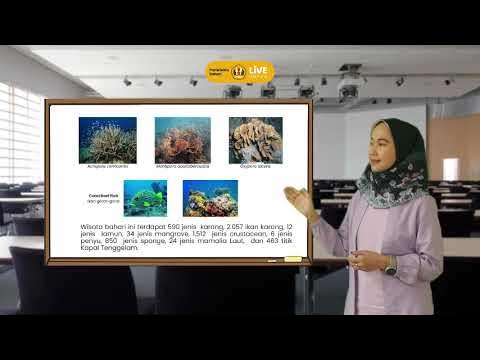Pengertian Perencanaan Pariwisata
Summary
TLDRThis video provides an overview of tourism planning, emphasizing its significance in sustainable development. It explores the growth of tourism, which is predicted to reach 1.6 billion international visitors by 2020, with countries like Indonesia becoming major tourist destinations. The script introduces tourism systems, such as Liver's 1979 model, highlighting key components like origin, transit, and destination areas. It underscores the importance of careful planning to balance economic benefits, environmental protection, and community involvement. Key principles of tourism planning include accessibility, attraction, infrastructure, and community engagement, all crucial for achieving long-term tourism success.
Takeaways
- 😀 Tourism is a rapidly growing sector, with predictions of 1.6 billion international tourist visits by 2020.
- 😀 The tourism system consists of three key components: origin areas, transit areas, and destination areas.
- 😀 Lever's 1979 model highlights the importance of integrating territorial space, infrastructure, supporting facilities, policies, institutions, and tourist behavior in tourism planning.
- 😀 Tourism planning is essential for managing both the positive and negative impacts of tourism on natural and cultural resources.
- 😀 Tourism is highly competitive, and destination promotion is increasingly intense, requiring strategic planning.
- 😀 A well-planned tourism destination can minimize negative impacts while maximizing positive outcomes for both the environment and local communities.
- 😀 Tourism planning must stimulate economic development and ensure visitor satisfaction throughout the travel experience.
- 😀 A key component of tourism planning is ensuring the protection of natural and cultural resources, avoiding damage during tourism activities.
- 😀 Tourism planning should enhance the quality of life of local communities by involving them in the planning and decision-making process.
- 😀 The five essential components of tourism planning (the eyes and 1C) are accessibility, attraction, ancillary services, community involvement, and collaboration.
- 😀 Effective tourism planning involves setting clear goals, developing strategies, and considering policies that promote sustainability and long-term growth.
Q & A
What is the predicted number of international tourist visits in 2020 according to the World Tourism Organization?
-The World Tourism Organization predicted that in 2020, the number of international tourist visits would approach 1.6 billion.
Which regions are considered the main tourist destinations according to the transcript?
-The main destinations are Europe, East Asia, the Pacific, as well as America and Indonesia.
What is the definition of tourism provided in the transcript?
-Tourism is a variety of activities that are temporary in nature and done for various purposes other than earning a living. It is closely related to travel, which involves moving from the place of origin to the destination.
What is the 'tourism system' as described in the transcript?
-A tourism system consists of three components: the area of origin (where tourists come from), the transit area (places passed through during travel), and the destination area (the final tourist location).
Who proposed the concept of the tourism system model discussed in the transcript?
-The concept was proposed by Liver in 1979.
What are the key aspects that the tourism system model is related to?
-The tourism system model is related to aspects such as territorial space, infrastructure and supporting facilities, policies and institutions, and tourist behavior.
Why is tourism planning important according to the transcript?
-Tourism planning is important because tourism is more complex than previously thought, affecting many sectors of life. It can have both positive and negative impacts, and proper planning helps to manage and maximize the benefits while minimizing the harms.
What are the four elements of good tourism planning as outlined by Gan?
-The four elements are: stimulating economic development, guaranteeing visitor satisfaction, accommodating the interests of natural and cultural resources, and improving the quality of life for local communities through tourism.
What is meant by 'tourism planning as a process' in the context of the script?
-Tourism planning as a process involves the development and implementation of tourism policies, aiming for sustainable development and balancing economic, environmental, and social factors.
What are the five important components in tourism planning summarized in the script?
-The five important components of tourism planning are: accessibility, convenience (or attraction), ancillary (infrastructure facilities), community involvement, and cooperation.
Outlines

This section is available to paid users only. Please upgrade to access this part.
Upgrade NowMindmap

This section is available to paid users only. Please upgrade to access this part.
Upgrade NowKeywords

This section is available to paid users only. Please upgrade to access this part.
Upgrade NowHighlights

This section is available to paid users only. Please upgrade to access this part.
Upgrade NowTranscripts

This section is available to paid users only. Please upgrade to access this part.
Upgrade NowBrowse More Related Video

ETS: Rangkuman Materi Pengantar Perencanaan Wilayah dan Kota

PROFIL KABUPATEN BOGOR 2023

TOURISM & SUSTAINABLE LOCAL DEVELOPMENT - Isye Susana Nurhasanah, S.T., M.Si (Han)., Ph.D.

Course Syllabus - Macro Perspective of Tourism & Hospitality (Part 1 of 2)

Tata Kelola Wisata Bahari

Texas Tourism Friendly Research Resources
5.0 / 5 (0 votes)